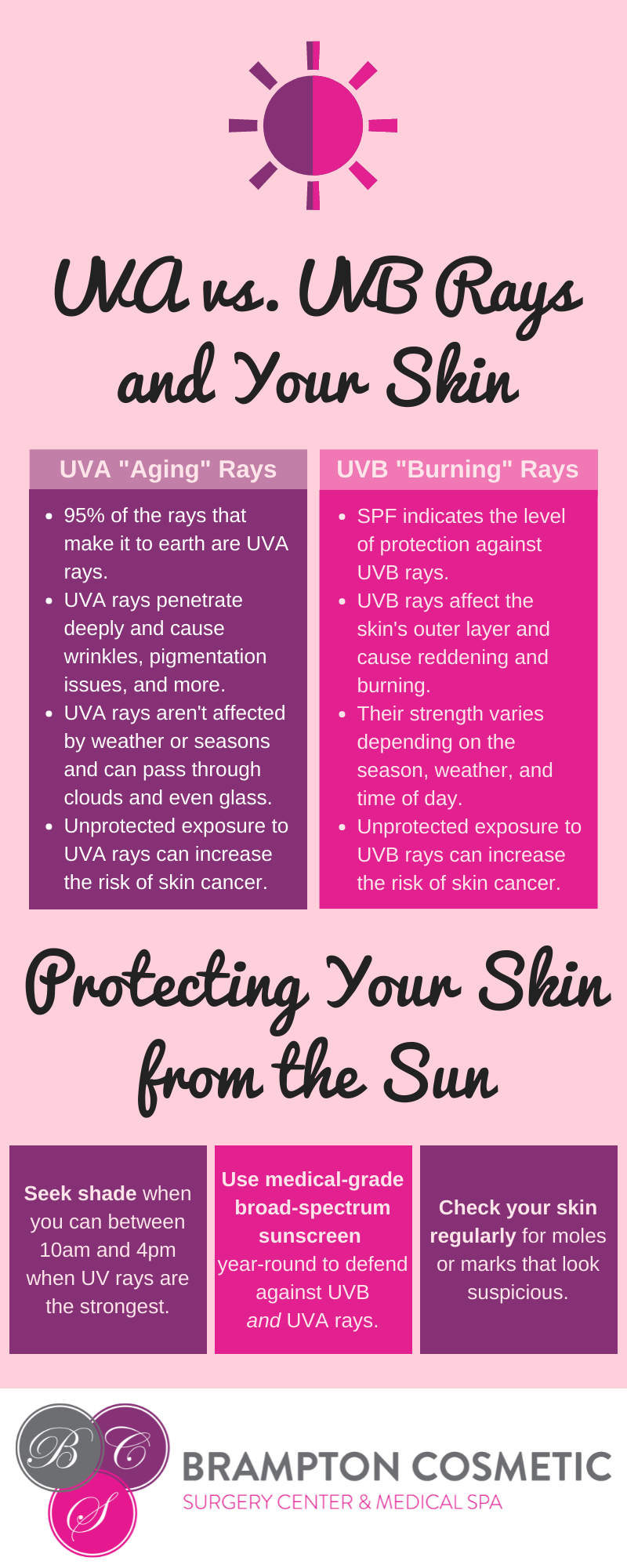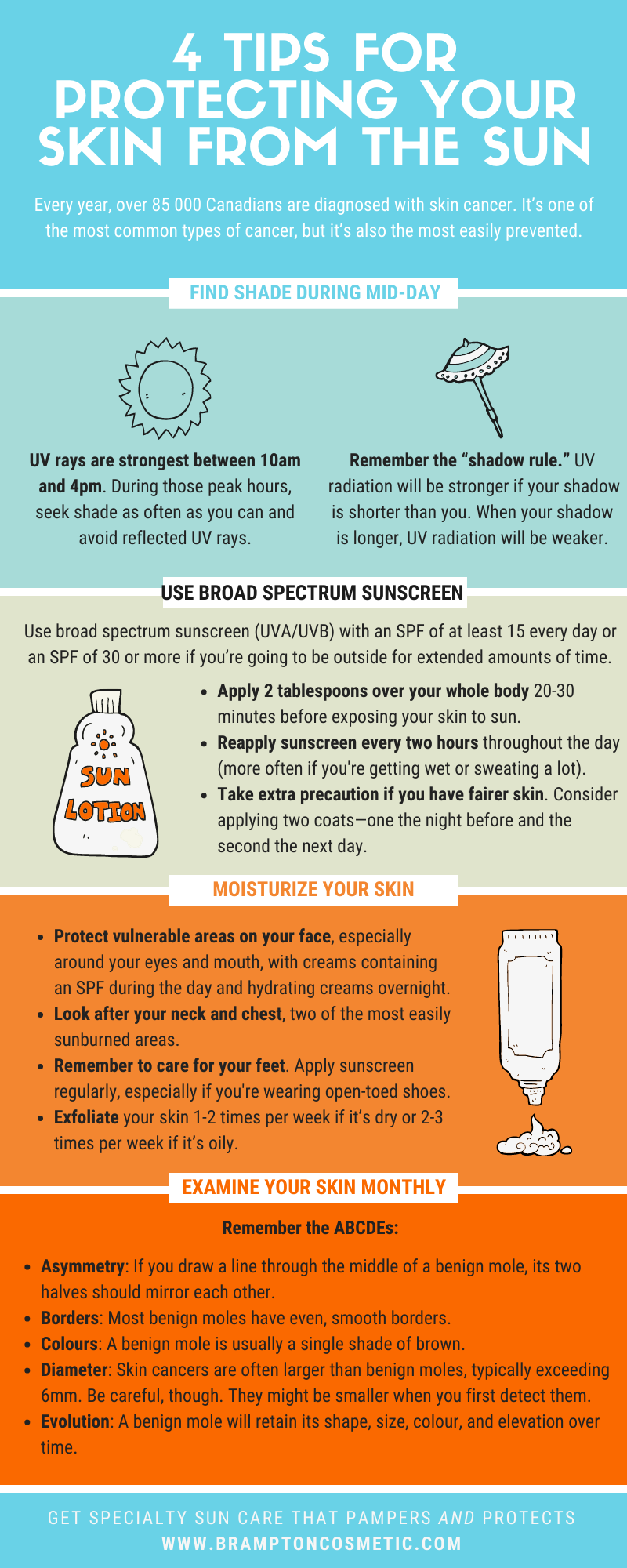Did you know that skin cancer is the third most common cancer among women in their 20s and 30s around the world or that it impacts over 80 000 Canadians every year? UVA rays can even get to you when and where you least expect them, easily going through clouds on an overcast day and even the glass in your car’s windows while you’re driving.
In this blog, we take a look at how UVA and UVB rays affect skin differently and some of the steps you should take to stay protected throughout the year.
The Effects of UVA Radiation on Our Skin
UVA rays are sometimes nicknamed “the aging rays” because that’s what they’re primarily responsible for. UVA rays penetrate your skin deeply, causing damage to collagen and cells that leads to:
- Lines and wrinkles
- Pigmentation issues
- Loss of skin elasticity
One of the most important things to understand about UVA rays is that—unlike UVB rays—UVA rays aren’t affected by day-to-day weather or the seasons. They are present throughout the year and can pass easily through clouds and glass. To keep yourself properly protected from UVA rays, it’s crucial to choose a medical-grade broad-spectrum sunscreen.
Another element of confusion around UVA rays has been their connection to skin cancer. Until recently, it was believed that there was little connection (that UVA rays didn’t cause damage to the areas of the skin where skin cancer occurs). Research has shown that this is not the case, however, and that UVA rays contribute just as much to skin cancer as are UVB rays.
Check out this resource from EltaMD to find more facts about the toll UV rays can take on your skin.
The Effects of UVB Radiation on Our Skin
UVB rays are sometimes called “the burning rays,” as they affect the skin’s outer layer and are responsible for causing sunburns. They also play a key role in the development of skin cancer.
Unlike UVA rays, UVB rays are impacted by seasons, time of day, and weather. In the northern hemisphere, UVB rays tend to be their strongest between April and October and between 10am and 4pm.
That being said, if you’re on a ski vacation in the middle of February, you do need to make sure you’re wearing medical-grade sunscreen. UVB rays are more intense at higher altitudes (even in the winter), and reflective materials like snow can cause up to 80% of rays to bounce back into your face (so that in essence they hit you twice).
Keeping Your Skin Protected from the Sun Year-Round
Regardless of the season, there are a few things we can all do throughout the year to defend ourselves against the damaging effects of UVA and UVB radiation:
- During the summer especially, seek shade during mid-day (10am-4pm) when UV rays are strongest.
- Use medical-grade broad-spectrum sunscreen for UVA/UVB protection.
- Keep your face protected with a daily moisturizer that contains an SPF.
- Examine your skin each month to check for moles or marks that look suspicious.
To learn more about these four tips, read our earlier blog!
June Is Sun Care Month at Brampton Cosmetic: Enjoy 25% off Sunscreens!
Get 25% off sunscreen products from EltaMD, AlumierMD, Sunforgettable, and ZO Skin Health this June at Brampton Cosmetic.
At Brampton Cosmetic, we provide a range of skin health products including medical-grade sunscreens that provide broad spectrum UVA/UVB protection. Contact us today to learn more!
Like this? Check out:
- Cosmetic Surgery vs. Plastic Surgery: What’s the Difference and Why Does It Matter?
- Financing Your Cosmetic Surgery Procedure
- AluminEye Wins Best Eye Cream in Fashion’s 2017 Beauty Awards!
- Your Guide to Financing Cosmetic Surgery with Brampton Cosmetic - April 10, 2024
- Liposuction vs. Tummy Tuck: Which is Most Affective for Me? - March 21, 2024
- The Brampton Cosmetic Team Wishes You A Happy Holiday! - December 18, 2023
- Brampton Cosmetic’s Skincare & Beauty Holiday Gift Guide 2023 - November 22, 2023
- Microneedling & Beauty Booster Treatments to Target Some of The Most Difficult Skin Concerns - November 3, 2023








Comments are closed.